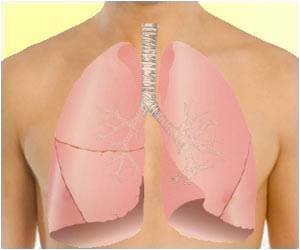New, Rapid Way to Diagnose Lung Infections

Researchers aim to create a novel imaging technique capable of promptly identifying specific lung infections in real-time, with the goal of expediting treatment for patients in critical condition.
Kotagiri, an associate professor of pharmaceutical sciences at the UC James L. Winkle College of Pharmacy, has been awarded a five-year $3 million, R01 grant from the National Heart, Lung, and Blood Institute (NHLBI) to develop and study the effectiveness of different kinds of injectable probes (metallic contrast agents) that would collect at the site of the infection and immediately light up under a nuclear imaging machine, known as a PET scan.
Challenges in Current Lung Infection Diagnosis Methods
Currently, radiologists use chest X-rays to confirm the diagnosis of pneumonia and other infections in the lungs. An X-ray, however, cannot determine the specifics of the infection or whether the infection is bacterial, viral or fungal. A specific diagnosis can only be determined by a pathologist, after culturing a sample of lung tissue which is collected from an invasive procedure (called a bronchoscopy) and takes time, typically 2-3 days.
Critically ill patients, however, such as those with infectious pneumonia and underlying conditions such as chronic obstructive pulmonary disease (COPD), might not have time to spare, says Kotagiri.
An added benefit, he says, is that the contrast agent development process “doesn’t require elaborate processing or preparation time.” This is critical as development of contrast agents can be time-consuming and complicated. A simple and fast process is expected to reduce preparation time in a clinical laboratory and potentially enable adoption of the technology in a clinical setting.
Advertisement
With this study, in animal models, Kotagiri and colleagues will only be looking at bacterial and viral pneumonias in conjunction with COPD, but the imaging approach has the potential to apply to other types of infections such as fungal infections or conditions such as cystic fibrosis.
Imaging the patient after treatment, Kotagiri says, could also identify whether the patient is responding to medications such as antibiotics.
Source: Eurekalert
Source link
#Rapid #Diagnose #Lung #Infections



